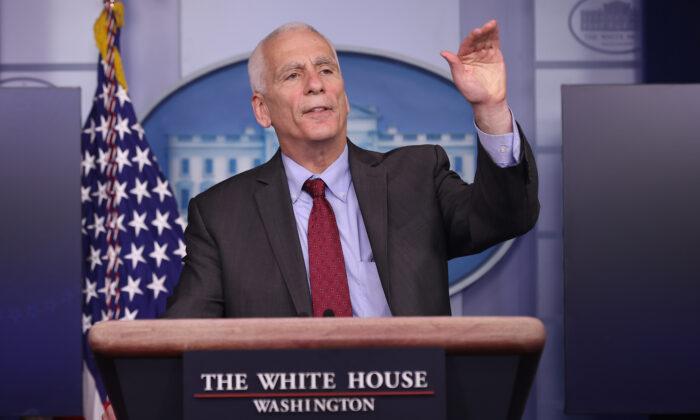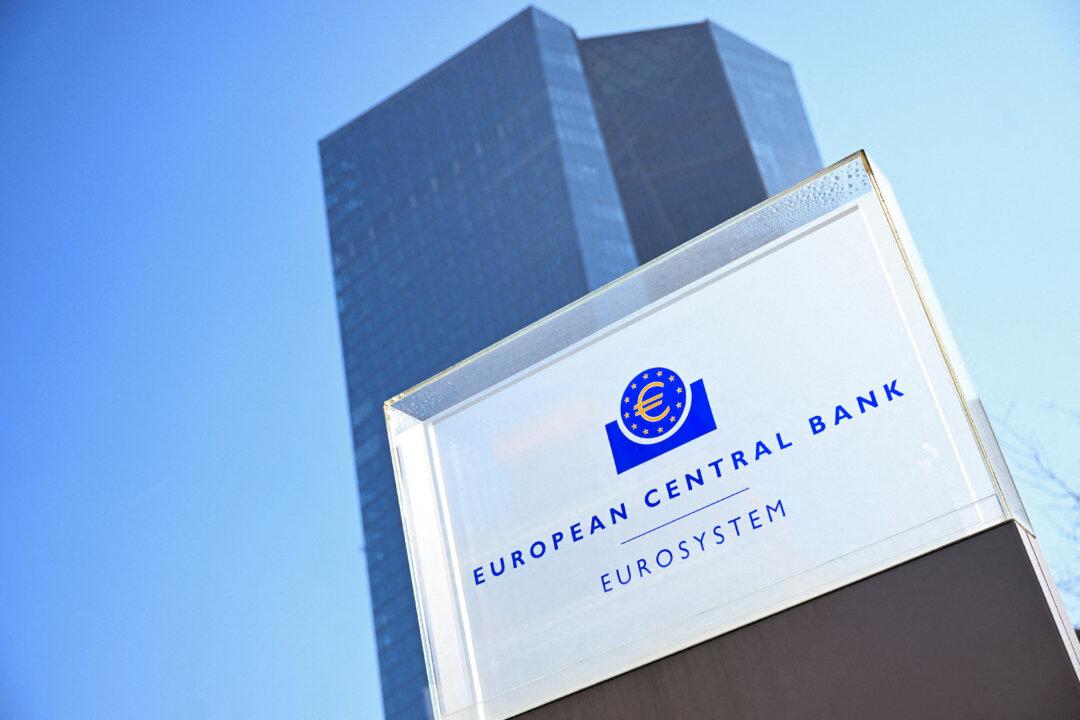White House economic adviser Jared Bernstein
told Fox News in a recent interview that inflation is likely to stay elevated longer than previously expected.
Bernstein told the outlet that he thinks the rate of inflation will come in at around 4 percent for 2021, before falling to 2.3 percent in 2022. He did not say when, precisely, he expects the rate will tick down next year, but noted inflation would likely stay high into the middle of next year.
His expectations closely track the Fed’s most recent predictions. While Bernstein did not specify which inflation measure he was referring to, his estimates are in line with the most recent Personal Consumption Expenditure (PCE) inflation projections from the Federal Open Market Committee (FOMC), the Fed’s policy-setting body.
After its most recent Sept. 21–22 meeting, the FOMC issued a revised set of economic projections (
pdf) that estimate the PCE inflation rate at 4.2 percent for 2021, a sharp upward revision from June’s projection of 3.4 percent.
For 2022, Fed policymakers expect PCE inflation of 2.2 percent, up from an earlier projection of 2.1 percent.
However, the 18 members of the FOMC varied in their predictions, ranging in next year’s PCE inflation estimate from 1.7 percent to 3.0 percent.
Bernstein, like Fed officials and many economists, blame supply-side disruptions for the bulk of the recent inflationary spike. When supply chain dislocations get ironed out, inflation will subside, he argued.
Some economists have warned of the growing risk of stagflation—where economic growth falls while inflation stays high.
Economist Nouriel Roubini, known for his gloomy-yet-accurate forecast of the 2008 financial crash—a prediction he made at a time of peak market exuberance—warned in a
recent op-ed that the global supply chain crisis, combined with high debt ratios and ultra-loose monetary and fiscal policies, threatens to turn the “mild stagflation” of recent months into a full-blown stagflationary crisis.
Stephen Roach, former Morgan Stanley Asia chairman,
on Wednesday became the latest high-profile economist to sound the alarm on the risk of the United States facing 1970s-style stagflation. Roach thinks the energy price spike is inflicting major damage to struggling supply chains, pushing up the risk of higher price growth even if the economy slows down.
While Fed officials maintain that the current bout of inflation is temporary and will abate once supply chain dislocations ease, they’ve acknowledged that inflation has been higher and longer-lasting than they previously believed.
New York Federal Reserve Bank President John Williams
said on Sept. 27 that consumer expectations for what the rate of inflation will be several years down the road remain “well-anchored” at around the Fed’s 2 percent objective, though he said there are upside risks and a “great deal of uncertainty” around the inflationary outlook.





